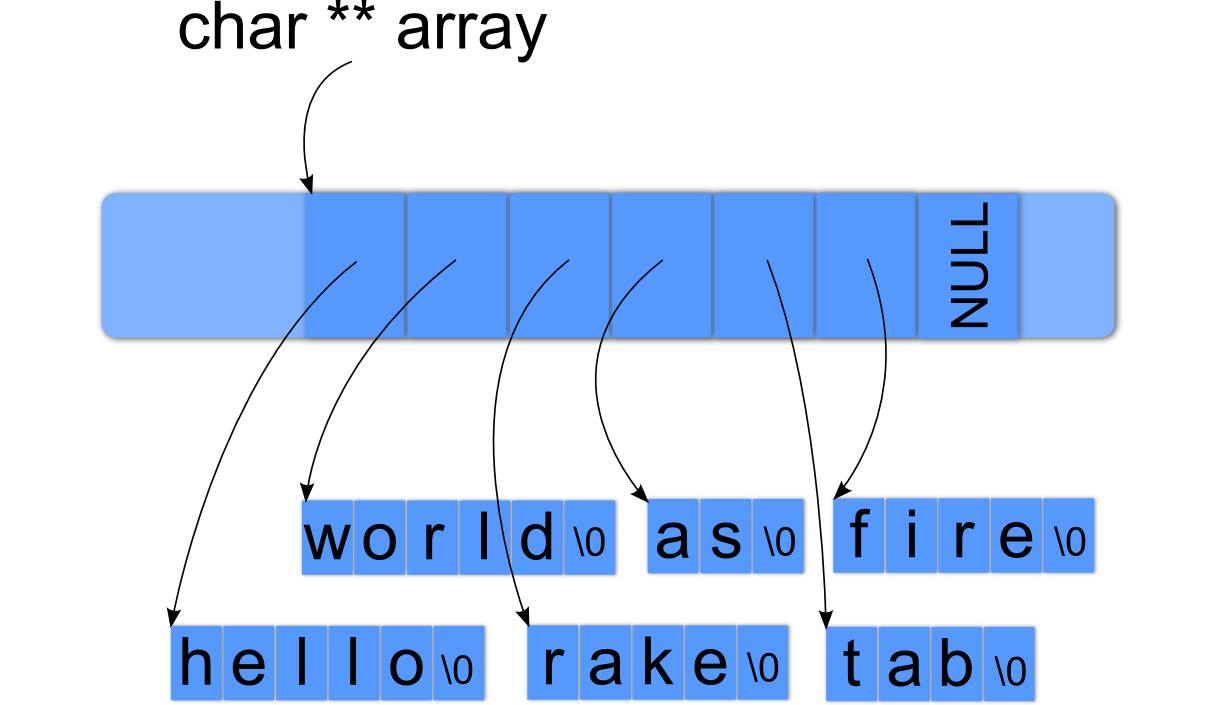Extreme Edge Cases Edit on Github
Learning Objectives
The learning objectives for Extreme Edge Cases are:
- Test Driven Development
- Thinking of Edge Cases
- String Manipulation
- C Programming
Suggested Readings
We suggest you read the following from the
wikibook
before starting Extreme Edge Cases:
- C Programming, Part 1: Introduction
- C Programming, Part 2: Text Input And Output
- C Programming, Part 3: Common Gotchas
Backstory
What makes code good? Is it camelCase? Lots of comments? Descriptive variable names, perhaps?
One thing we know is that good code is generally modular - it consists of discrete “units” of functionality that are only responsible for certain behavior. In our case, where we’re working with C, these units are primarily functions.
For example, the C string function strlen is responsible solely for determining the length of a string; it doesn’t do any I/O or networking. A function that knows all and tries to do all would be bad design, and testing whether that kind of function adheres to expectations would be nontrivial.
A programmer might ask, “Do my units of work behave the way I expect? If my function expects a string, how does it behave when given NULL?”. These are crucial questions, since ensuring that units of code work exactly the way one would expect makes it easy to build reliable and robust software. An unreliable unit in a large system can affect the entire system significantly. Imagine if strcpy, for example, did not behave properly on all inputs; all of the higher-level units that use strcpy, and all of the units that interact with those units, would in-turn have unpredictable behavior, and so the unreliability would propagate through the whole system.
Enter unit testing.
Unit Testing
Unit testing is a ubiquitous and crucial software development method used heavily in industry. According to artofunittesting.com, “a unit test is an automated piece of code that invokes a unit of work in the system and then checks a single assumption about the behavior of that unit of work”. This sounds like testing - leave it to the QAs, right? Actually, developers, much to their chagrin, are expected to write their own unit tests.
In order to write effective unit tests, all possible cases of input to a unit (mainly functions, in C), including edge cases, should be tested. Good unit tests test (extreme) edge cases, making sure that the discrete unit of functionality performs as specified with unexpected inputs.
In this Lab, your goal is to create and test the behavior of an arbitrary string manipulation function to determine if it is reliable and predictable. While writing your functions, try to write modular code: this will make your life easier when you test it. You’ll learn how to write effective test cases—an incredibly helpful skill for the rest of the course. Finally, you’ll be able to take these skills to Facenovel for your next internship and impress your coworkers.
Camel Caser
We have chosen
char **camel_caser(const char* input)
as your arbitrary string manipulation function.
Your manager, to celebrate Hump Day, has asked all of the interns to implement a brand new camelCaser to convert sentences into camelCase. To give you a chance to earn your return offer, he also assigned you to write test cases for all the other interns’ implementations of camelCaser, with the implementations hidden from you.
Let’s say I want to get a sequence of sentences in camelCase. This is the string passed into your method:
"The Heisenbug is an incredible creature. Facenovel servers get their power from its indeterminism. Code smell can be ignored with INCREDIBLE use of air freshener. God objects are the new religion."
Your method should return the following:
["theHeisenbugIsAnIncredibleCreature",
"facenovelServersGetTheirPowerFromItsIndeterminism",
"codeSmellCanBeIgnoredWithIncredibleUseOfAirFreshener",
"godObjectsAreTheNewReligion",
NULL]
The brackets denote that the above is an array of those strings. (More details in this section)
- A NULL pointer is undefined for camelCaser, so you should just return a NULL pointer.
- A input sentence,
input_s, is defined as any MAXIMAL substring of the input string that ends with a punctuation mark and does not contain a punctuation mark.- This means that “Hello.World.” gets split into 2 sentences “Hello” and “World” and NOT “Hello.World”.
- Let the camelCasing of
input_sbe calledoutput_s output_sis the the concatenation of all wordswininput_safterwhas been camelcased- The punctuation from
input_sis not added tooutput_s
- The punctuation from
- words are:
- delimited by the MAXIMAL amount of whitespace
- This means that “hello world” is split into “hello” and world” and NOT “hello “, “ “, “ world” or any other combination of whitespaces
- considered uppercased words if all of its letters are uppercased.
- considered lowercased words if all of its letters are lowercased.
- delimited by the MAXIMAL amount of whitespace
- a word
wis camelCased if and only if:- it is the first word and it is lowercased
- it is any word after the first word and its first letter is uppercased
- punctuation marks, whitespace, and letters are defined by
ispunct(),isspace(), andisalpha()respectively.- These are parts of the C standard, so you can
man ispunctfor more information.
- These are parts of the C standard, so you can
- Finally, you return an array of
output_sfor everyinput_sin the input string terminated by a NULL pointer.
Hint: ctype.h has a lot of useful functions for this.
We have also included a reference implementation. This means that if you have a question like “what should be the result of inputting <blah> into camel_caser()”, then you should try it out. You can start the program with ./camelCaser-reference and the program will take your input and return it camelCased.
Your implementation goes in camelCaser.c and you may not leak any memory.
Camel Caser Result In Memory
camelCaser takes in a C string, which represents an arbitrary number of sentences and returns a pointer to a NULL terminated array of C strings where each sentence has been camelCased. Note that all the C strings must be in their own buffers (1 malloc per camelCased sentence).
For those who like pictures I will explain what the return value of camelCaser looks like in memory.

In the above picture you can see that we have a char double pointer called ‘array’. Now in this scenario the char double pointer is a character pointer that points to the beginning of a NULL terminated array of character pointers. Each of the character pointers in the array point to the beginning of a NULL terminated char array that can be anywhere in memory in a separate buffer. The reason why these arrays are NULL terminated is because your user will need to know when these arrays end so they do not start reading garbage values. This means that
array[0]
will return a character pointer. Dereferencing that character pointer gets me an actual character. For demonstration purposes I am going to show you how to grab the character “s” in “as”.
// Take array and move it over by 3 times the size of a char pointer.
char **ptr = array + 3;
// Deference ptr to get back a character pointer pointing to the beginning of "as".
char *as = *ptr;
// Take that pointer and move it over by 1 times the size of a char.
char *ptr2 = as + 1;
// Now dereference that to get an actual char.
char s = *ptr2;
Writing Unit Tests
Your goal is to show that the other interns’ implementations of camelCaser - which, of course, you can’t see directly - fail on some extreme test cases, and, in the meantime, demonstrate to the head honcho at Facenovel exactly how robust your own function is.
Facenovel promises to pass in C-strings. Likewise, you promise to return a dynamically allocated NULL-terminated array of strings (the array and the strings both on the heap and each string in separate buffers).
What kinds of edge cases might come up?
Run make camelCaser to test. You will have to fill in tests in camelCaser_tests.c.
Because Facenovel values their testing server time you may not try more than 16 different inputs and each input must be less than 128 characters (only characters). This does NOT mean your implementation can assume input of 128 characters or less.
Also it is not in the spirit of unit testing to diff your implementation with the one you are testing. So for this lab you may not call on your own camel_caser when implementing the tester.
Other helpful resources: Test-Driven Development
Submission Instructions
Please read details on Academic Integrity fully. These are shared by all assignments in CS 241.
We will be using Subversion as our hand-in system this semester. Our grading system will checkout your most recent (pre-deadline) commit for grading. Therefore, to hand in your code, all you have to do is commit it to your Subversion repository.
To check out the provided code for
extreme_edge_cases
from the class repository, go to your cs241 directory (the one you checked out for "know your tools") and run:
svn up
If you run ls you will now see a
extreme_edge_cases folder, where you can find this assignment!
To commit your changes (send them to us) type:
svn ci -m "extreme_edge_cases submission"
Your repository directory can be viewed from a web browser from the following URL: https://subversion.ews.illinois.edu/svn/sp17-cs241/NETID/extreme_edge_cases where NETID is your University NetID. It is important to check that the files you expect to be graded are present and up to date in your SVN copy.
Assignment Feedback
We strive to provide the best assignments that we can for this course and would like your feedback on them!
This is the form we will use to evaluate assignments. We appreciate the time you take to give us your honest feedback and we promise to keep iterating on these assignments to make your experience in 241 the best it can be.
https://goo.gl/forms/z06gBY7MocFDrE3S2
